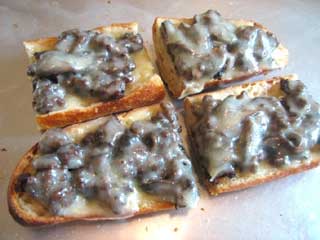The results were showing that when the volunteers placed the interests of others before their own, the generosity activated a primitive part of the brain that usually lights up in response to food or sex. Altruism, the experiment suggested, was not a superior moral faculty that suppresses basic selfish urges but rather was basic to the brain, hard-wired and pleasurable.
Source: If It Feels Good to Be Good, It Might Be Only Natural – washingtonpost.com
A few weeks ago I saw a PBS program on Dogs. In the first episode they discussed the impact of breeding tameness into foxes and its relationship to the diversity of dog breeds. Within ten generations the foxes started showing changes that are somewhat difficult to explain. Here is an excerpt from the transcript.
NARRATOR: Traits like coat color, or the way a dog carries its ears or tail, are determined by its genes. Genes are pieces of DNA, and they often come in subtly different versions. Every dog gets one copy of every gene from mom and one from dad. These genes can be mixed and matched in countless ways, but if the parents don’t have it, the pup can’t get it.
And that’s what makes curly tails and patchy coats in dogs so mysterious. Wolves don’t have them. It took a remarkable experiment in a most unlikely place, to solve this mystery. The place was the middle of nowhere, Siberia. And the experimenter was an out-of-favor Russian geneticist named Dmitri Belyaev.
Local fox farmers had asked Belyaev for help in breeding a less vicious animal. Belyaev began with the tamest foxes he could find. From their offspring, and for many generations thereafter, he chose only the tamest for breeding. He’d expected that each new generation would be a little less vicious, a little more tame. But by the tenth generation, he was seeing things he’d never expected.
RAY COPPINGER: All of a sudden his fox ears started down, his fox tails started up, they started to bark, which is not characteristic of foxes. They started to have different coats, all these little features that you can’t imagine being in the wild type. I mean it’s not a matter of selecting for, because they’re not there to be selected for””that variation isn’t there.
Later on they hypothesize that human kindness created the diversity in dog breeds. Our interaction with dogs has been the stimulus for changes normally explained by genes.
The strong relationship of kindness with evolutionary change is what fascinated me. Biologist may prefer the “natural selection” phrase but “survival of the fittest” is the phrase most often associated with evolutionary theory because it epitomizes the struggle for life. It is not a big stretch for biologists to add kindness to the natural selection process but it is a new and foreign territory. Kindness is one of seven holy virtues and one of the more visible traits of successful religions. Kindness and theology have stood the test of time. Combining evolutionary theory with kindness seems like an unholy alliance and new fodder in the “Does God exist” debate.
- An atheist or agnostic will look at these facts as an explanation for the large number of people who believe in a God. Atheists have always had a tough time explaining why so many people believe in God and the emotional attachment people have with this unseen God. Now they can say that humans are hard-wired to feel good about helping others and that humans have confused feeling good about helping others with the existence of God.
- An apologist on the other hand will probably look at these diverse facts and see the truth that they always saw as self-evident has been verified in science. It is more natural for an apologist to presume that we are hard-wired for kindness and that kindness is just one of the traits God is trying to develop in us. Apologists believe in evolution. It is just a different theory than the one used by biologists. If we are hard-wired to feel good about helping others and our kindness has an evolutionary impact on dogs, what do you suppose this same kindness will do to the evolution of humans? What if the most important evolutionary change to humans was not when we learned to walk upright or that we have opposing thumbs but when we embraced kindness. We have seen that within a short period of time kindness can cause enormous changes in dogs. If kindness can be such a powerful evolutionary influence can the other virtues be far behind with their impact? The most amazing fact about kindness is that all animals can exhibit this trait but it is only humans who have been successful with it. Maybe we have just begun to see the breadcrumbs of God’s plan for us.


